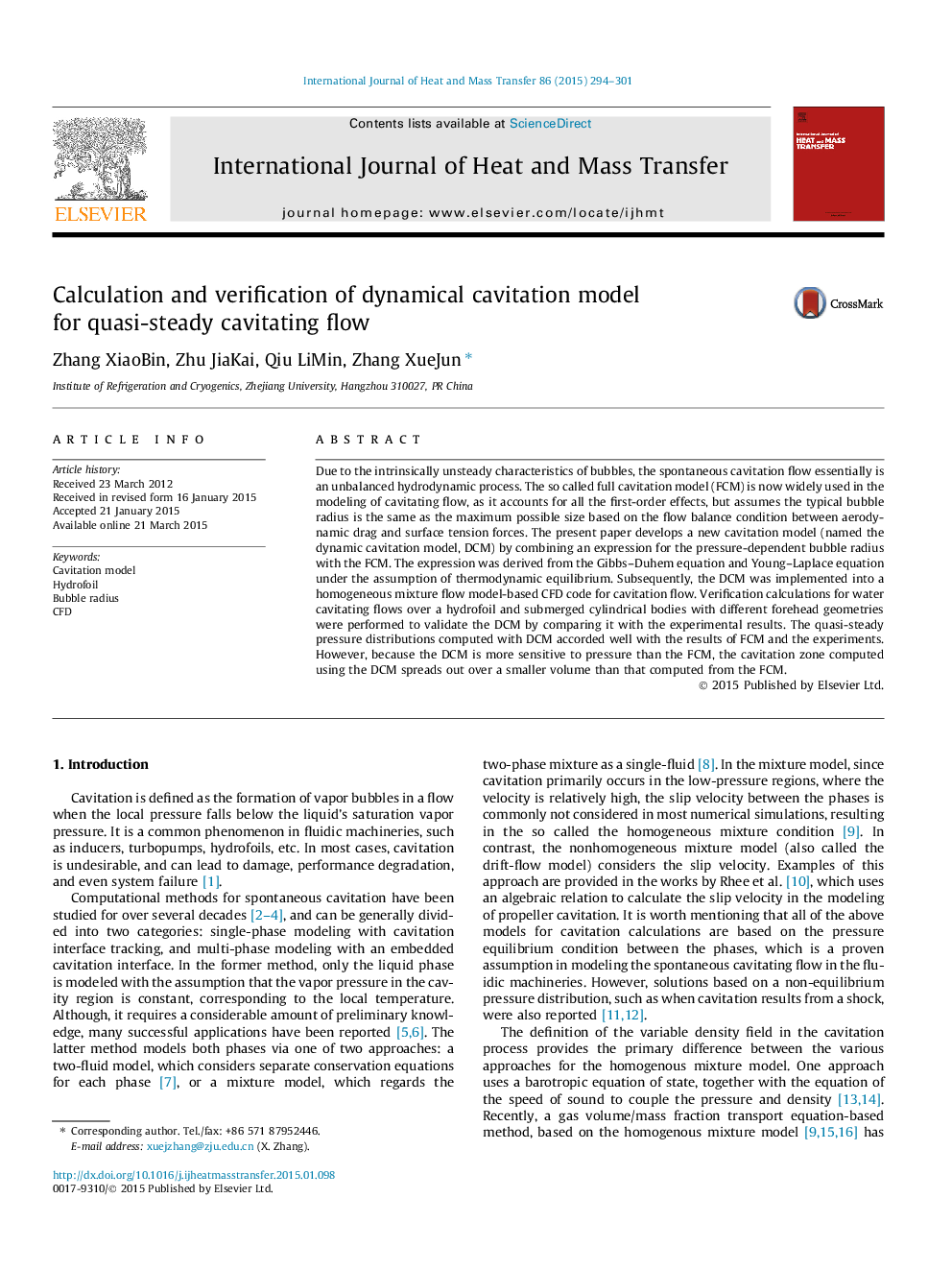| Article ID | Journal | Published Year | Pages | File Type |
|---|---|---|---|---|
| 656739 | International Journal of Heat and Mass Transfer | 2015 | 8 Pages |
Due to the intrinsically unsteady characteristics of bubbles, the spontaneous cavitation flow essentially is an unbalanced hydrodynamic process. The so called full cavitation model (FCM) is now widely used in the modeling of cavitating flow, as it accounts for all the first-order effects, but assumes the typical bubble radius is the same as the maximum possible size based on the flow balance condition between aerodynamic drag and surface tension forces. The present paper develops a new cavitation model (named the dynamic cavitation model, DCM) by combining an expression for the pressure-dependent bubble radius with the FCM. The expression was derived from the Gibbs–Duhem equation and Young–Laplace equation under the assumption of thermodynamic equilibrium. Subsequently, the DCM was implemented into a homogeneous mixture flow model-based CFD code for cavitation flow. Verification calculations for water cavitating flows over a hydrofoil and submerged cylindrical bodies with different forehead geometries were performed to validate the DCM by comparing it with the experimental results. The quasi-steady pressure distributions computed with DCM accorded well with the results of FCM and the experiments. However, because the DCM is more sensitive to pressure than the FCM, the cavitation zone computed using the DCM spreads out over a smaller volume than that computed from the FCM.
